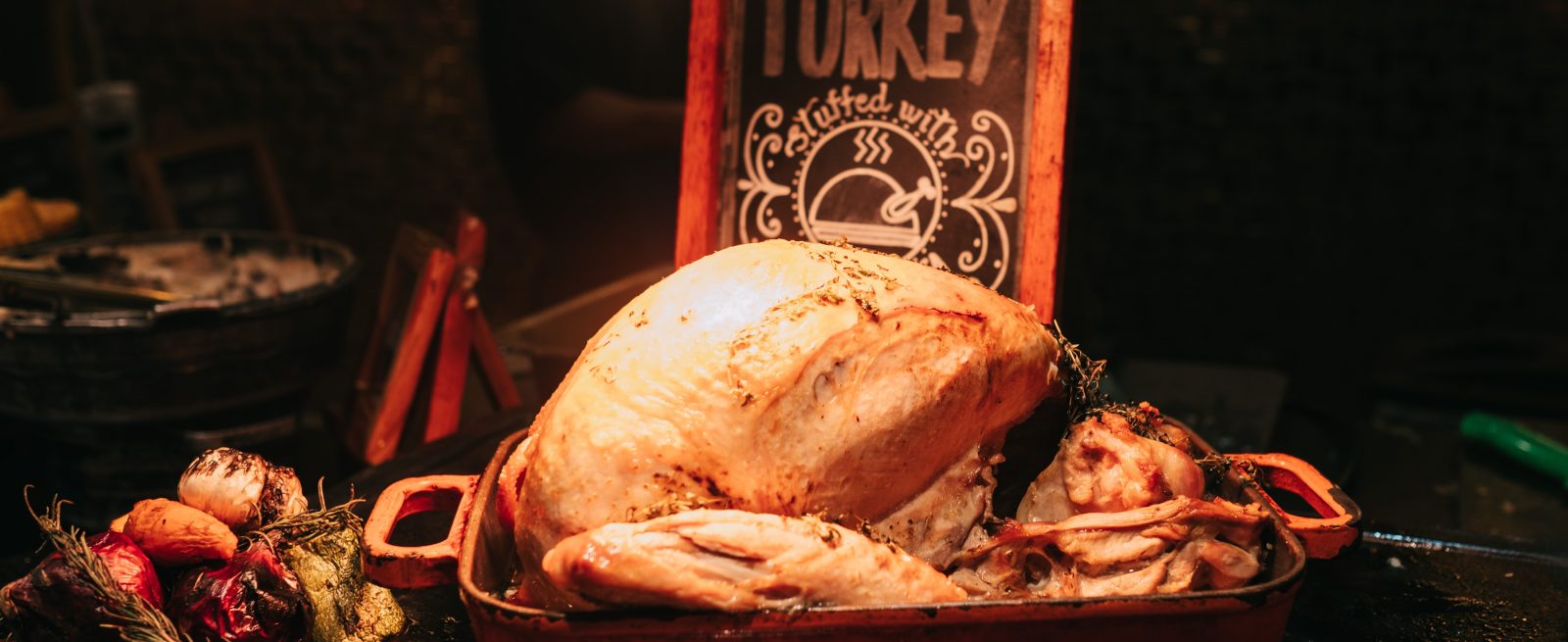Food Safety Never Takes a Holiday
5 Min Read By Paula Herald
With the season of food and Thanksgiving when holiday food is at the forefront, what are defined standards and procedures that restaurants should keep top-of-mind to set the expectations regarding food handling and preparation during the holiday rush?
From quick-service and fast casual restaurants tasked with accommodating busy holiday shoppers, to dining establishments on a mission to wow guests with an impressive holiday meal or catering order, many restaurants will experience a holiday rush this season. With an influx of customers at peak dining times and an increase in the volume of prep work, some employees may feel pressure to sacrifice food safety for speed.
With food at the forefront of the holiday season, restaurant managers should take the opportunity before the rush begins to remind employees of how to prioritize food safety. Reinforce this sentiment with regular team meetings and postings that remind employees of the proper protocols, and promote good food safety practices to protect customers. After all, these things never take a holiday.
Managers can help employees adhere to proper food safety during the holiday season with these tips:
Start with the Basics
Remind employees not to take shortcuts on personal hygiene standards just because a restaurant is busier than usual. Reinforce proper handwashing techniques and ensure employees use gloves when working with ready-to-eat foods. When employees get in a hurry, it is easy to forget about washing hands between glove changes or when changing tasks from working with raw animal proteins to ready-to-eat foods that will not receive any additional cooking.
Help Employees Understand the Why
In team meetings, use specific examples to help new employees and temporary seasonal workers understand why food safety is so important, as well as to remind your veteran team members. Examples include:
- Use separate cutting boards for cutting raw chicken and lettuce because bacteria from raw chicken can contaminate the ready-to-eat lettuce and cause people to get very sick, or even die.
- Keep sanitizer levels at the proper concentration per the product instructions. Otherwise, surfaces may be wiped down, but will not be treated with the proper sanitizer levels to get rid of harmful bacteria that can cause illness.
- Cool foods rapidly to get out of the Temperature Danger Zone. Why? Harmful bacteria grow most rapidly in the temperature range of 41° F – 135° F, so the less time food spends in the Danger Zone, the less opportunity there is for harmful bacteria to grow… which can make people sick.
Build it into the Procedures
While it is important to help employees understand why it is important to do things a certain way, building food safety right into the Standard Operating Procedures (SOPs) for preparing products can help promote consistency among employees, and even across multiple restaurant locations.
For instance, when including seasonal menu items, incorporate the right food safety processes into your storage, preparation and cooking procedures for the newly introduced products. Specific training, tools and timer adjustments should be provided for preparing atypical menu items like stuffed quail; freezer-to-fryer foods that are larger and make take longer to fry than those that are typically served; and produce like artichokes that may be more difficult to wash. Building food safety right into product preparation protocols can help ensure employees execute proper food safety without overthinking it.
Follow these tips to make it easy for your staff to follow the SOPs during the holiday season:
- Provide the right tools and supplies to make compliance possible – digital thermometers, tongs, gloves, hand soap, sanitizer for dishwashing, wiping towels, ice for cooling food, etc.
- Label all newly introduced ingredients during storage.
- If large meals are made for pickup or catering events, add extra cooling units or heating cabinets to hold food out of the Temperature Danger Zone until customer pick-up.
Be Prepared to Prepare
With the additional volume of food preparation during the holiday season, space on countertops and prep tables may be more limited than usual; however, it is still imperative that ready-to-eat products are kept separate from raw animal proteins. Use these strategies to be ready for your seasonal prep:
- Try scheduling prep work so that ready-to-eat foods are prepared first and raw proteins afterward to prevent cross-contamination.
- Use designated color-coded cutting boards and utensils for ready-to-eat foods versus those for raw animal proteins to prevent potential for cross-contamination.
- Storage space in the walk-in cooler may be limited. Pay attention to maintaining rack storage order to prevent cross-contamination of ready-to-eat foods from raw animal proteins as well as any allergen cross-contact potential.
- New menu items may have new or unexpected allergens (a new dessert may have nut or dairy ingredients, or a new sauce may contain anchovies, a fish allergen). Educate back-of-house staff and servers to be more aware of the new ingredients so they can inquire with customers about allergies and prevent cross-contact during prep.
Keep it Clean
Sanitizer can be used to kill harmful bacteria on food-contact surfaces, but sanitizer solution must be kept at the proper concentration levels to be effective. Otherwise, employees may have a false sense of security in wiping down surfaces when, in reality, the sanitizer too diluted to effectively kill harmful bacteria. Take these measures to keep surfaces clean:
- Wash, rinse and sanitize all food contact surfaces, equipment and utensils used with raw animal proteins before using with ready-to-eat foods.
- With extra customers comes more dirty dishes. Schedule regular checks for adequate detergent levels/proper sanitizer concentration and rinse temperature for dish machines. (Don’t forget to clean the filter of food particles about every 20 cycles of the dish machine.)
- Check three-compartment sinks as the washing, rinsing and sanitizing sink solutions may need to be refreshed more frequently if soiled.
Don’t Skimp on Cook Time
It is important to get it right when cooking larger portions and larger items like turkeys to ensure the food is fully cooked to safe temperatures. Monitor your cooking temperatures with these tips:
- Use thermometers (make sure they are calibrated) to make sure food is cooked to proper temperatures. Do not rely on existing timers if they don’t provide adequate time to cook food to the proper temperature. Reset timers or add additional time.
- Cooking partially frozen turkeys or other animal proteins like roasts will take longer, so proper thawing is important. Note that thawing large items will take special coordination, and ample time and space that may be in short supply.
- Cooking larger portions and quantities of food in ovens may require that cook times are adjusted for the loads. Use a thermometer to check final internal cook temperatures rather than a preset timer. This is equally important for freezer-to-fryer foods if cooking something different from the usual offerings.
- Continue to monitor final cook temperatures to ensure animal proteins are cooked properly. A woman contracted salmonellosis and died from eating chicken that was not cooked to 165° F when a restaurant was busy and rushed to get the order out on a holiday.
By following these tips, restaurant managers can help make employees comfortable that they have the right knowledge and skills to prepare food safely even when busy. Reinforce with employees that food safety can never be sacrificed because of a rush — if a seasonal menu item might take additional time to prepare safely, don’t risk it — simply advise customers that the wait time might be longer to maintain quality.
Sources: https://www.fda.gov/food/people-risk-foodborne-illness/foodborne-illness-videos


